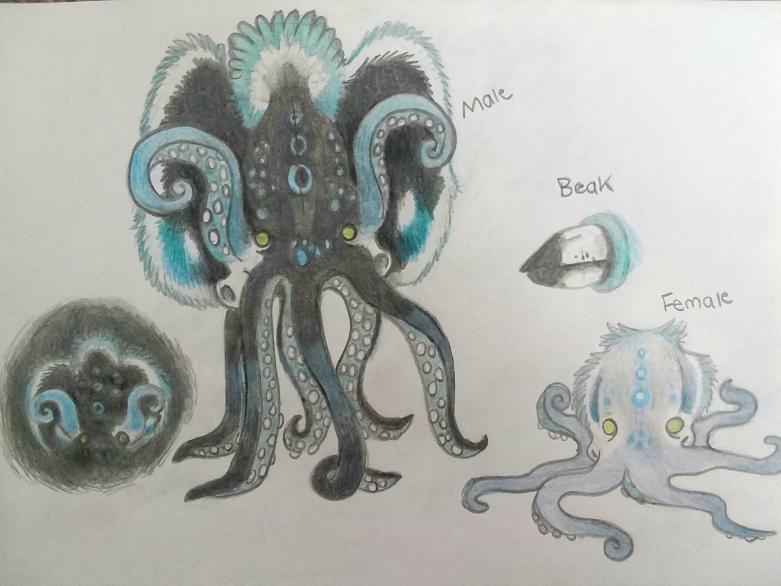HOME | DD
 echo1085 — Lumneon
echo1085 — Lumneon

#animal #cephalopod #evo #evolution #fauna #mollusc #octopus #organism #spec #speculative #cephalexo #lumneon
Published: 2021-03-11 19:09:39 +0000 UTC; Views: 1266; Favourites: 27; Downloads: 2
Redirect to original
Description
•Creature name: Lumneon {Stellameridium luciferii}•Environment: These cephalopods range across tropical coastlines and islands
•Niche: Nocturnal mesopredator of coral reefs
•Explanation for appearance:
The lumneon is typically either pure black {male} or pure blue-grey {female}, however when a lumneon is ready to breed {some as young as three, others up to five years old} it will use bright blue and blue-green coloration in order to attract a mate.
•Explanation for why it evolved the way it did: These nocturnal cephalopods had to compete for mates in a dark world where individuals were seaparated from each other by great distances. While the reef octopus did not initially have much of a mating ritual, over time the need to stand out amongst the crowd in addition to females being pickier about their choice in mates drove the males to perform elaborate rituals to attract them.
•Animal it diverged from: Carribean reef octopus
•Diet: These octopi feed primarily on coral and slow moving crustaceans
•Hunting behavior: by nightfall, the lumneon emerges from it's safe dark den and crawls about on the seafloor. When it finds a meal, it crushes it with it's powerful beak.
•Prey to: Any larger cephalopod which could either hunt it while it is out at night, capture it while sleeping in it's den, or in it's arena.
•Reproduction/Courtship behavior: Being in the tropics, lumneons can breed at any time of the year, however the courtship ritual will only happen once in their lifetime, from three to five years old. Each male stakes out a territory and begin collecting chunks of coral, pebbles, seaweed wracks, and seashells to form a ring around itself. These arenas can be found clustered in atolls, lagoons, and coves wherever the water is the most shallow and placid. The males will remain there for up to a month, refusing to leave. They greatly decrease their metabolism and slowly starve. To attract a female, the male will emit a very low frequency rumble during the night, by vibrating his flaps of skin {females cannot make noise}. If she should arrive, he will begin the next phase of his elaborate display- he produces a bioluminescent ink. Raising his two tentacles in the air and extending his two furry flaps, he elevates himself out of the shallows and proceeds to violently shake the flaps. Swaying back and forth to move the ink around, he pulses and ripples his blue luminescent markings. She will flash her markings once if she chooses him. After mating, the female will leave to find a good place to lay her clutch of eggs, and in typical octopus fashion both will die- the female after protecting her eggs until they hatch, and the male soon after.
•Lifespan: up to five years


























